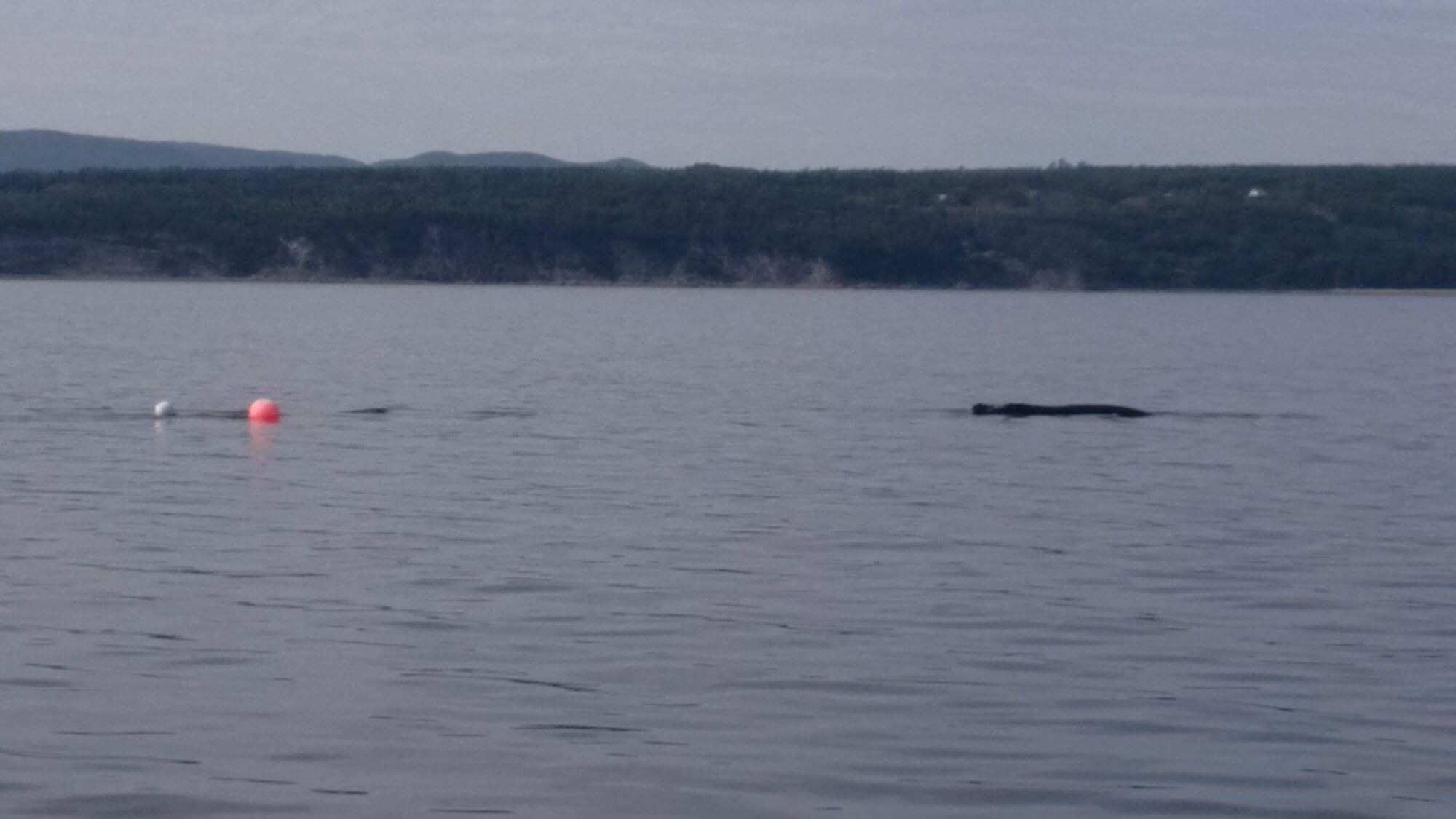Late in the day on August 25, 2019, the Quebec Marine Mammal Emergency Response Network receives a report for a humpback whale entangled off the cliffs of Forillon National Park in the Gaspé Peninsula. A recreational boater notices that the humpback was dragging buoys and immediately dialled 1-877-7baleine.
The animal manages to swim, but its mobility seems hampered by the rope and the buoys it is towing. The Network quickly informs Forillon National Park and Fisheries and Oceans Canada teams to try to relocate the animal. On August 26, the humpback is observed once again, dragging two buoys to which crab traps are tethered. It is located in Gaspé Bay, off the beach known as Boom Defense. The whale disentanglement specialists at the Campobello Whale Rescue Team are notified. This Maritime-based team is ready to mobilize provided that a satellite tag can be placed on the fishing equipment, which will allow the animal to be located easily and quickly.
Fishery officers locate the humpback. They attempt to place the tag, and a first crab cage comes free. The crew is ecstatic! Hooray!, the whale is free! Unfortunately, a few hours later, fishery officers sight the humpback again and realize that a second trap is still caught on its pectoral fin. This time, it proves impossible to place a satellite tag. The animal disappears. The fishery officers and the Campobello team reassess.
Since then, the humpback has not been seen again. Did it free itself on its own? Did it move to another area? Anything is possible. In 2017, a humpback entangled off the Gaspé coast travelled to the Gulf of Maine where it was eventually disentangled by the Center for Coastal Studies. This year, this same individual (“Snowball”) was seen again in the Gaspé Peninsula and in the Estuary, and appeared to be in good health.
What should you do if you observe an entangled animal? We would ask that you take photos and, ideally, videos that will allow us to document the animal’s state of health. Additionally, try to note the exact position and if possible the GPS coordinates with the time of the observation in order to facilitate the tracking of its movements.
Maintain a safe distance of at least 200 m to avoid increasing the whale’s stress levels and to keep your engine from getting caught in whatever is encumbering the animal.





